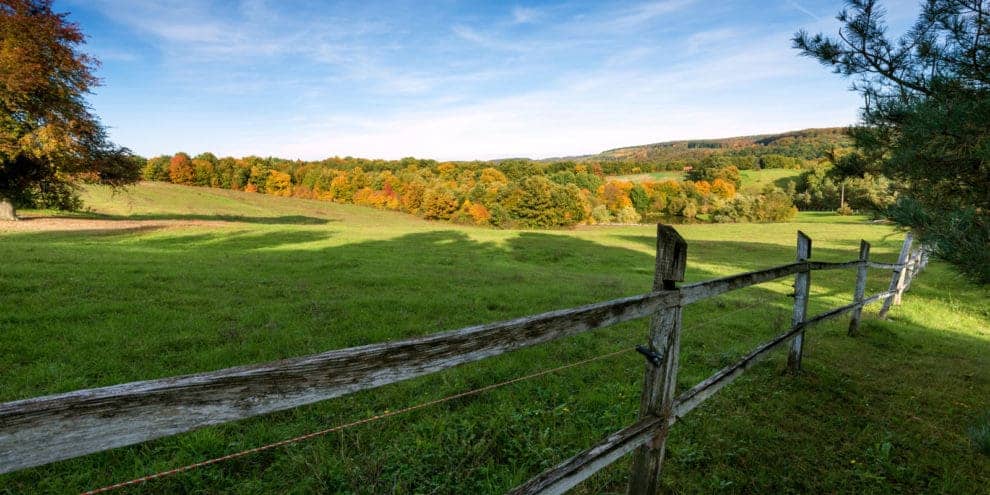A typical pattern of dividing land for sale in rural areas is when a property is to be divided among children following the death of their parents.
The founding generation might have started with 1,000 acres. Three or four generations later each lot might contain only 25 to 50 acres. Eventually, a family member sells a piece of the original property to someone outside the family—and to get the best price, to someone from outside the community.
This upside-down ownership tree is common, and I saw a recent example of how it can create an endless nightmare for an unsuspecting buyer.
The current generation of six sons owned their parents’ land (itself a product of earlier divisions) as an inheritance. Donnie, Ronnie, Lonnie, Dopey, Doc and Cranky Bear owned about 75 acres each, and each had a house on his property. Lonnie found a buyer at $600,000, about three times what any of his brothers individually or collectively would pay.
The first problem with this pending rural land for sale was the issue of a road easement over Lonnie for Donnie, Ronnie, Dopey and Doc whose properties lay behind his. Dopey lived year-round on his property, and the others had built hunt camps that they used during seasons and on weekends.
The four back-lot brothers used one road that came off the state-maintained highway and bisected Lonnie’s place. Since the four parcels in the back had always been part of the same family’s holdings, no one had ever thought to “do up a paper” providing for legal access over the common road. The road everyone used passed by Lonnie’s house, and he, too, used it as a driveway.
The buyer wanted to know how many parties had a right to use the road. His lawyer ran the deed search back 60 years as state law required and found no easement to any of the four boys. Then he went back as far as possible; same story. When Donnie, Ronnie, Dopey and Doc were informed that they did not have a legal right to use Lonnie’s road by way of recorded easement, they were unhappy, as might be expected.
The back lots could be accessed over land other than Lonnie’s, but everyone had always used that road. It was convenient, and they had always shared in the maintenance. No one wanted to change.
But change was in the offing. If Lonnie’s sale went through, the buyer could gate off the road to the brothers or write the four a letter saying that he extended permission (a license, is the legal term) for them to continue to use it at his pleasure and subject to immediate revocation. If the buyer did nothing, the brothers could begin the clock of adverse use that might eventually establish their legal right to use the road.
The lawyer advised the buyer that the law probably supported him if he chose to deny access. The lawyer doubted that a claim by the brothers of prescriptive easement or prescription by necessity would be upheld.
But the lawyer said a successful lawsuit would leave lingering resentments, whether the buyer won or lost. The newcomer would be surrounded by the historic family, all of whom hated his guts. Future disputes over fencing, trespass, nuisance activities and so on were likely.
If the buyer granted or sold easements to Donnie, Ronnie, Dopey and Doc, they were not likely to agree to prohibit future subdivision of their properties. So the buyer might face as many as 12 road users rather than the brothers four.
And then there was the problem of the spring right. Lonnie’s house was served by a drilled well. But before the well had been installed, the house had drawn water from a spring across the state road, now owned by Cranky Bear. The spring hadn’t been used in at least 60 years, but a trickle of water still ran out of the old iron pipe at Lonnie’s place.
The buyer wanted spring water, not, as he put it, “drilled water.” In his mind, the difference between the two was large.
The seller’s broker found a deed that mentioned a spring right. He gave the deed to the buyer, showing, he said, that the buyer had a legal right to draw from a spring. Unfortunately, the spring that the deed referred to was on Dopey, not Cranky Bear.
Cranky Bear suddenly discovered a renewed interest in the spring that he had never used. He would not sell the buyer a right to it. Nor would he trade his spring right for the buyer granting an access right to his four brothers. Dopey was willing to trade access for a spring right “on him.” His three brothers were angered by what they considered Dopey’s “sellout deal.”
When I was told about this situation, I advised the buyer to use his study contingency to walk away from the contract. While I thought the spring right was something the buyer could live without, the situation with the back-lot brothers would fester and find other expressions. Hard feelings would not soften over time.
Lonnie, the seller, could have avoided most, if not all, of this mess had he deeded an access easement to his brothers (with future division restrictions) and secured a spring right from Cranky Bear before he listed his property and accepted a contract.
The buyer was made aware that it’s a bad idea to move into a new place where all of your immediate neighbors are hostile, and Cranky Bear is down right mean.
This content may not be used or reproduced in any manner whatsoever, in part or in whole, without written permission of LANDTHINK. Use of this content without permission is a violation of federal copyright law. The articles, posts, comments, opinions and information provided by LANDTHINK are for informational and research purposes only and DOES NOT substitute or coincide with the advice of an attorney, accountant, real estate broker or any other licensed real estate professional. LANDTHINK strongly advises visitors and readers to seek their own professional guidance and advice related to buying, investing in or selling real estate.









Curtis, good article. This is so true about rural land here in Alabama. I’ve dealt with 2 separate owners in the last 24 hours that have inherited tracts that have been divided many time; and all with no easements because the family has used the land for the past umpteen years.
Your advice to the sellers is spot-on. Take care of the details before putting the property up for sale. This will increase the odds of selling and prevent hurt feelings with relatives.
Thanks for this article.
Great article. I can certainly relate to this as I am in the process of buying a 100 acre property from 5 siblings, 3 of which still live on the land. Fortunately, this bunch is more amicable than those you describe and I am making sure to have a survey done and getting the easement properly described.
Excellent article, and very entertaining! It answered my easement question and made me laugh at the same time. 🙂